There is nothing wrong with getting ready and preparing yourself for whatever situation you might encounter in the future.
Preparations could mean stocking food, first aid essentials, tools, and maybe even guns; yes, you guessed what’s next, ammunition storage.
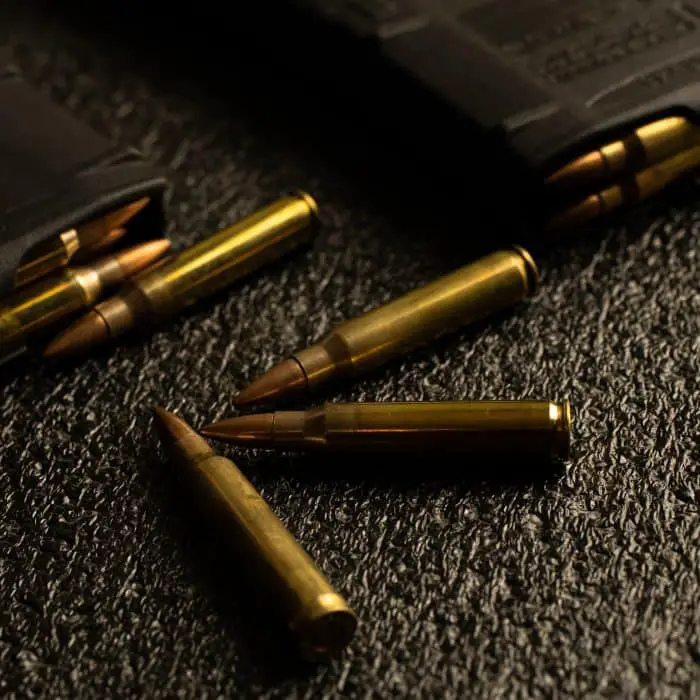
Whether you’re serious about getting ready for the rainy days or you’re an enthusiast who loves to collect items that can be used for when an apocalypse happens, you need to learn the proper ways on how to store your ammunition.
It’s not new for us preppers to collect and store items that we might need for any circumstance. And with this, we need to learn how to properly go about the process of storing these items that we will need.
We will also look at the things you need to consider when preparing your storage area.
We’ll also review tiny details such as temperature, organization techniques, and other strategies you can employ to have better results in your ammo storage. There are also several options you can choose in the types of ammo cans and boxes.
These things are essential to learning how to store bullets because let’s face it, ammo is not cheap.
You don’t want to spend your hard-earned money in stocking up ammo and let it end up expired or corroded over the years. Not exercising proper storage procedures will inevitably lead you to a frustrating and quite frankly, expensive situation.
Purchasing ammo doesn’t have to be an everyday activity you need to do.
It is a long-term investment. You need to spend time protecting your ammo, much like how you would protect your financial investments. It is better to put in the effort, time, and initial expense in securing that your ammo is stored correctly.
Knowledge in storing ammo will also be helpful for when emergencies come. Do not stress yourself out thinking whether the bullet you have will work or be ready for use in a gun range or hunting.
Proper storage will also steer you and the people around you from potential danger stemming from using damaged ammo.
It will also cause poor firing performance and possible damage to your favorite firearm.
Ammunition Storage Guidelines
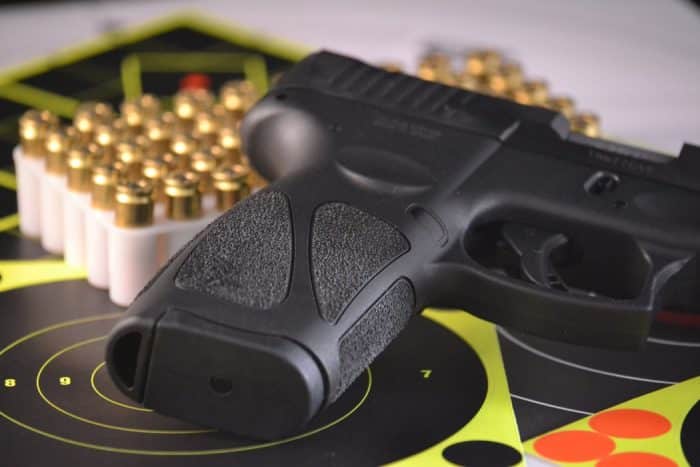
These are general rules that you need to remember when storing ammo.
While it is true that ammo can withstand harsh conditions, it is not an excuse to treat it poorly. The environment where military personnel operates is harsh.
From the drastic change of temperatures to the possible contamination of elements such as sand, mud, and rainwater, bullets can survive them all.
But much like any other object, this durability has its limits. Bullets are not indestructible.
Where should you store ammo?
Properly storing ammo isn’t rocket science. You just need to know what to do and follow through with action.
As a rule of thumb, you need to remember these principles: keep your ammo in a place that is dry, cold, and dark. If you adhere to these, you are already on your way to better ammo storage. Let’s discuss each element below:
How to keep your ammo dry
One of the top enemies of your ammo storage is moisture or humidity.
As much as possible, keep it away from your bullets. Since ammo material is usually from metal, i.e., primers and casing, they are prone to corrosion and other metal-damaging reactions when exposed to moisture.

If you allow rust to stay on your bullets longer, it will soon render them useless.
Sure, you can get away with sanding it when the corrosion is still insignificant and comparatively small, but it will alter the bullet. Sanding ammo down to remove rust is a surefire way to have inaccurate shots resulting in poor aiming performance.
So, how do we control the entry of moisture?
Simple, keep bullets away from humid places.
One notoriously humid location in your house is your basement. While it might seem a good idea to hide your bullets down where most people can’t go and where kids cannot easily access, it will be bad for your ammo’s life.
Your basement is in constant contact with the ground around it. Water naturally seeps into the ground during rainy days.
Consequently, if left unchecked, the water can damage your house’s foundation. Cracking is one effect of this phenomenon. It would be beneficial if you always inspect your downspouts and gutters and service them regularly to avoid these problems.
However, no matter how “sealed” you might think your basement is, water will always have a way inside. Humidity will always be high in your basement, so avoid storing bullets in that area, and any location you know is humid.
What you can do is keep your ammo in a high place. Put it on a more elevated position like a cabinet top or a tall rack. This way, should flood water come in, your bullets are safe and secure from any moisture.
You can also use a dehumidifier to keep humidity levels in your basement low. This helpful appliance will pull out moisture continuously and greatly help you have better ammo storage.
How to keep your storage cool
Remember, it’s cool, not cold.
Don’t go and try freezing your ammo. Or, the better way to phrase this guide is to keep your ammo from extreme heat.
As mentioned earlier, bullets can withstand harsh conditions. However, this doesn’t mean you can leave everything to chance and hope your bullets aren’t affected by exposure to extreme heat.
Generally, bullets can take the heat of up to 150 Fahrenheit. More than that, bullets will most likely incur damage.
Although on a typical day, the temperature does not usually reach 150 Fahrenheit. As an example, the highest temperature ever recorded in the US was 134 degrees in 1913 at the Death Valley. We can assume that temperatures won’t be more than 134 degrees on an average day.
However, if you have a habit of putting your ammo inside a closed space, say, your car’s trunk, you’re in trouble. Car trunks can accumulate heat breaching the 150 degrees limit of bullets. If you expose your ammo in this temperature for extended periods, you will end up with weak or completely unusable bullets.
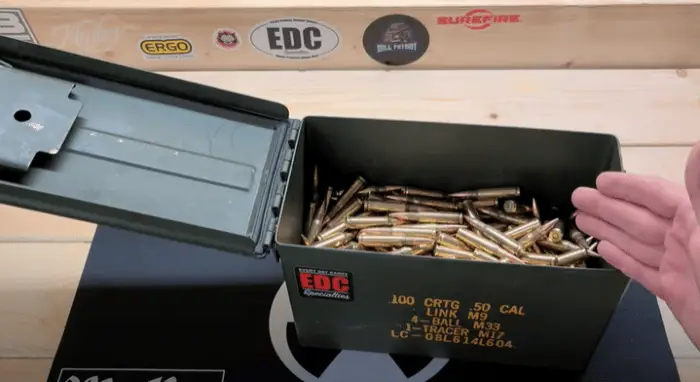
Be mindful too of storing your ammo in other closed parts of your house that receive sunlight. Examples of these are attics, cellars, and garages. These locations can have exposure to sunlight, and temperatures slowly creep up during the day.
Make sure you transfer your storage area from these places to somewhere cooler.
As an additional, be mindful of continually transferring your ammo from one location to another, especially if a drastic change in temperature is apparent.
When bullets are exposed to cold areas and then moved to a warmer environment, moisture can accumulate inside. Do you remember the science experiment you had in elementary where the teacher explains the concept of precipitation? The damage will also be worse if moisture collects inside the bullet.
How to keep your ammo “in the dark?”
Invisible UV rays will affect your bullets. Prolonged exposure to the sun is known to damage metal. This damage happens because UV rays can break down almost anything.
Imagine the difference of a car’s paint job that is under the sun for a long time versus one that is well kept inside the garage away from the harmful UV rays. You’ve seen this happen to cars in the junkyard.
Fortunately, a solution as simple as keeping your bullets indoors is the solution. It’d be better if you store your ammo inside an opaque container through which sunlight cannot penetrate. Closets, cabinets, pantries are all places where you can save your bullets if you want to keep them in the dark.
Is it safe to store old ammo?
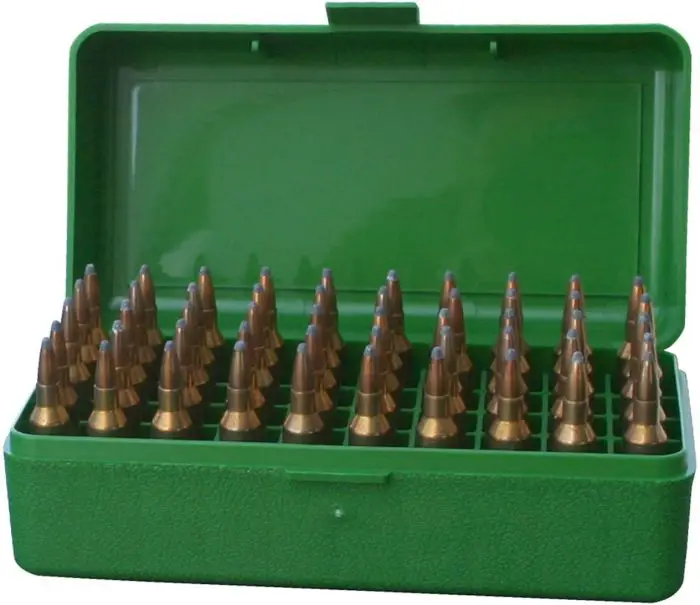
Lucky for us, technology has come a long way in manufacturing and producing bullets. Companies have found better ways to create long-lasting shells through extensive research, modern materials, and better manufacturing processes.
Generally speaking, yes, it is entirely safe to store old ammo. Bullets do not come with expiration dates as they are non-perishable items, unlike your other doomsday items such as canned goods, medicines, and first-aid kit items.
However, the gunpowder inside bullets is most likely to lose their potency over extended periods.
This loss of power can cause bullets to fail to fire, or the powder wouldn’t have enough explosion to push the bullet out of your firearm’s barrel. In effect, your gun will have a bullet lodged inside and can become an obstruction to the next round.
Consequently, this phenomenon can cause significant damage to your firearms internals. Not only will you spend money to repair your damaged gun, but there is also a high chance that you’ll injure yourself along the way.
The cons outweigh the pros of using old, stored bullets even if you correctly keep them. It’s better to purchase new ammo than to risk storing old ones, especially those manufactured before the 1930s. Before 1930, there were no smokeless powders used, and bullets had a much shorter shelf life.
How to properly organize your ammo?
There’s no better way to help improve the way you store your ammo than to keep it organized. Much like other items that people usually prepare for emergencies, e.g., canned goods, first aid kit, and survival items, bullets should be easily accessible, distinguishable, and labeled for quick inventory.
Since you might be stockpiling your ammo for more extended periods, it is crucial to have the discipline of adequately indicating them. Another good purchase to help you better ammo storage is a labeler.
Labelers make identifying items easier.
Do away with the hassle of opening every box/can/container of ammo you have just to check whether you grabbed the right set of bullets or not. In life or death situations, time is of the essence. Being familiar with your doomsday items will help you survive it.
If you don’t have labels on your ammo containers, you risk damaging your bullets when you have to pour them out on the floor to find ones that are compatible with the firearm on hand. Get yourself a decent labeler and organize your ammo.
Labels can also help you rotate your bullets properly.
Rotating means you use older bullets first. When labeling your ammo, indicate the date you purchased them; if you can have the data about the bullet’s manufacturing time down to the day, the better it is for your stockpiling.
As a rule, older bullets should be in front of the storage area; newer bullets should be at the back.
This technique will eliminate confusion as to what set of bullets you should grab when the time you might use them comes. You will also save money through this method as you won’t be storing several bullets, completely forgetting about them, rendering them useless.
You may also use bigger ammo cans. This ammo organizing item will allow you to store your ammo separately. You can also store smaller containers of ammo inside to avoid the mixing of bullets further.
Keep in mind that the aim of organizing your ammo is to increase efficiency during emergencies.
You will thank your past self for grabbing the right type of ammo when you’re on the run.
Review of the top ammo containers in the market today
Here are some of the top ammo containers in the market to help you improve your ammo storage system. We will go over them and review its features and how you might benefit if you use them.
| Ammo Storage | Top Feature |
| 1. Solid Tactical 50 Cal Ammo Can | Quality |
| 2. MTM AC4C Ammo Crate (4-can) | Multi-caliber ammo storage |
| 3. MTM 50 Caliber Ammo Storage Can | Construction |
| 4. Plano Tactical Custom Ammo Box | Large Capacity |
| 5. MTM 380/9MM Cal 100 Round Flip-Top Ammo Box | Stackable design |
1. Solid Tactical 50 Cal Ammo Can
Of all the top containers on this list, the Solid Tactical Ammo Cans have the closest resemblance to a military-grade ammo can. This ammo container can be for rough conditions in terms of quality, construction, material, and function.
Upon first inspection, you’ll see that the material used for these cans is steel, which is far more durable than plastic but might be on the heavier side.
This ammo can is also waterproof and airtight keeping elements that can damage bullets outside the container. The manufacturing company tests each individual can and makes sure each unit passes its standard. The seals can also keep dust, dirt, and debris out of the container.
The container is also spacious, allowing the storage of almost any bullet you have. On top of its superior build quality and ability to keep the bullets stored safely inside, each unit comes with free desiccant packs in every purchase. This additional feature further helps to wick moisture away from the ammo.
2. MTM AC4C Ammo Crate (4-can)
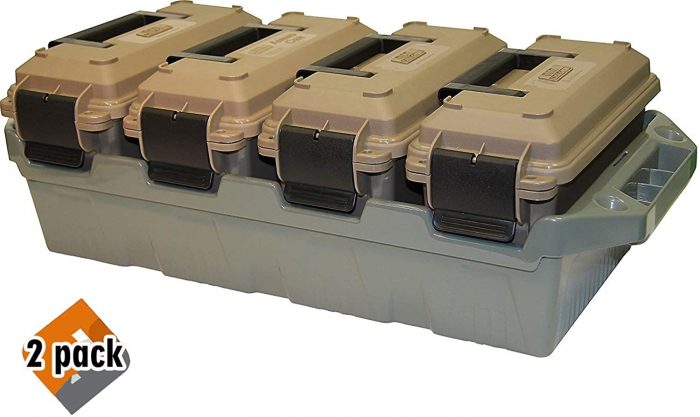
If you have built up quite a stash of ammo over the years, you will need a larger container to store them. The MTM AC4C Ammo Crate would be the perfect product for you. It can provide a substantial amount of space and also help you organize your bullets in an orderly manner.
This ammo crate can carry four 30-caliber cans. You can put four types of ammo in each can so you don’t mix them up and have a hard time sorting through a massive pile of bullets. A high-quality locking mechanism then secures these cans, so it is safe, especially while traveling or transporting it from your house to the gun range.
The MTM AC4C Ammo Crate’s outer material is a sturdy polypropylene material, which means they can take a beating. You can also stack one crate on top of the other securely. Stacking will make use of vertical space in your house instead of occupying ample floor space.
Because you can carry four different types of bullets in one crate, it is perfect for when you are practicing your shooting skills with several firearms.
Storage problems may arise if you have to carry different cans per bullet type. The MTM AC4C Ammo Crate also has provisions for ATV attachments, which means you can bring it hassle-free to remote locations reachable only by an off-road vehicle.
3. MTM 50 Caliber Ammo Storage Can
As mentioned earlier, the MTM AC4C is a crate that can carry four cans. One of those cans can be the MTM 50 Caliber Ammo Storage Can. You can bring this container individually and is perfect for individuals who do not have much ammo in their inventory.
The build of the MTM 50 Caliber Ammo Storage Can is for rough use. Its material is from rugged polypropylene. It also has the same handles, stacking ridges, locking system, and water-resistance seal as the MTM AC4C.
These cans will preserve the quality of your ammo.
Its O-ring rubber seal is highly effective in keeping moisture out, which can damage the bullets inside. The seal also keeps UV light from coming in. If you do not have any location in your house to safely store your bullets besides your basement, it would be beneficial if you keep them inside MTM 50s.
Although these cans can take a heavy beating, it still has its limitations. They are not as strong as military-grade ammo cans, which outer material is of steel and other more durable material. Be careful not to drop these cans from an extremely high place. It also doesn’t have the provisions the MTM AC4C has for ATV transport.
4. Plano Tactical Custom Ammo Box
This ammo box is another good choice when deciding what to use to store your ammo.
It uses hard, durable plastic as a material for its exterior. This ammo box has ridges that can facilitate a more comfortable organization and storage. Heavy-duty handles, o-ring seal, and a padlock tab all make up the rest of the build of this ammo box, which contributes to its durability.
The Plano Tactical Custom Ammo Box has the same capacity as the MTM AC4C Ammo crate. With that level of capacity, this ammo box can easily carry 6 to 8 boxes of ammo.
Their waterproofing feature is capable of moisture and water out of the box. The company claims they tested these ammo boxes by submerging them underwater overnight while keeping the bullets inside safe and dry.
If you want a bullet container that has the features of a high-end level storage option yet do not want to invest in more expensive military-grade cans and crates, this option is the best for you.
5. MTM 380/9MM Cal 100 Round Flip-Top Ammo Box
Contrary to the other conventional containers that are cans and crates, the MTM 100 Ammo Box has a different shape, and bullets are in a vertical position. As a suggestion, you should store your ammo base side up so it would be easier to grab.
This square box is an ammo organizer that can fit 9mm and 380 caliber bullets. It comes with dividers, for better bullet organization. The dimensions are specifically for 9mm Makarov, 9mm Luger, 380 ACP, 30 Luger, and 32 S&W. Its size is approximately five inches on each side and has a depth of 1.22 inches.
Regarding the capabilities of this box to safely store ammo, it somehow lacks the features that are on other burlier and more durable storage options. This box doesn’t have many features that can keep your ammo in cold, dry, and dark places.
When the top lid is closed, it can be water-resistant, but it doesn’t have rubber gaskets that can prevent air moisture. When exposed under the sun, UV light can damage the bullets inside as it cannot block the harmful rays by design.
However, what these boxes lack in storage features, they make up in their capacity.
If you’re an individual who is fond of practice shooting, this is the best container for you. You can store enough bullets in an MTM 100 Round Flip-Top Ammo Box for long shooting activities. Each box can hold up to 50 bullets and are easily stackable. The box also comes with a 25-year guarantee, which speaks a lot about its durability.
While the options presented above are excellent choices for ammo storage purposes, you need to define what you’re using the containers for and where you will be using them.
Using desiccants to improve stored ammo quality
Desiccants are a great addition to further help with keeping your ammo safe and dry inside your container or other storage areas.
While a dehumidifier can already assist in keeping the air around the space where you store your ammo dry, it will still be beneficial if each individual can have a desiccant.
You can purchase silica gel desiccants and put them inside each can to protect your bullets from corrosion.
Desiccants will also come in handy if you live in a place where the weather changes drastically from cold to hot in a short period. This phenomenon can bring moisture inside your cans.
There are several types of desiccants you can purchase in the market. You can choose from individual packers to rechargeable desiccants.
FAQs
Can ammo be stored in a safe?
Yes. As long as the safe can keep moisture outside and isn’t penetrable by UV light rays, it is safe to use them as ammo storage.
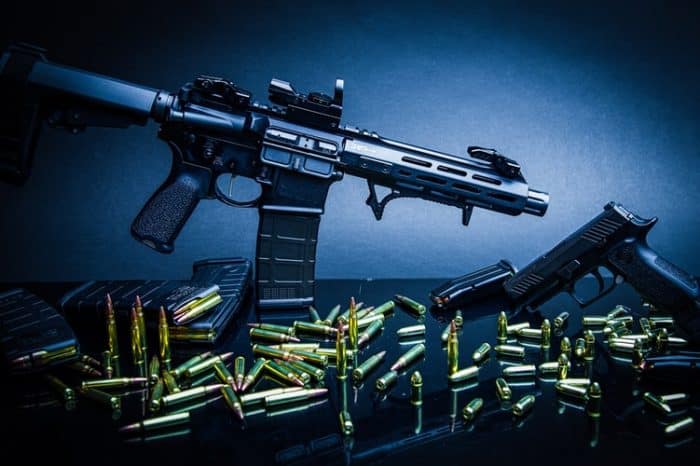
To help improve a safe’s storage performance, chuck in a few desiccants inside to keep moisture from damaging the bullets. It is also more beneficial if you use a fireproof safe.
Is it safe to store ammo and guns together?
Yes. There are no problems with storing guns and ammo together. Guns nor ammo can not be damaged by the other. They are both made from almost the same material and are both designed to be durable.
You need to remember when storing firearms and firearm-related items, it should be secure enough not to be opened by anyone you don’t want to handle your gun. Also, keep your firearm unloaded when storing them.
Can stored bullets explode?
While storing bullets for extended periods can change its performance, especially if they’re stored poorly, this doesn’t automatically mean they become dangerous. Ammunition cannot explode without the bang of a gun hammer.
Is it okay to store loose ammo?
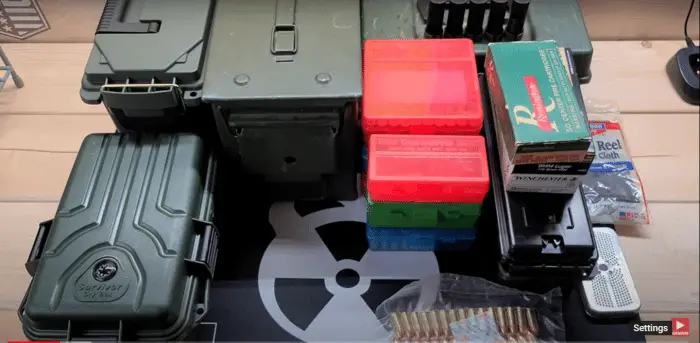
Yes, you can store loose ammo.
There are no damages that can happen to ammo if you do not keep them in an orderly manner. However, storing them this way is not recommended. As discussed earlier, you must be mindful of which of your bullets are newer or older. If you store them loose without adequately labeling them, there can be problems in the future.
Also, when you store loose ammo and mix them with different types, it will be harder for you to pick the bullets needed for the firearm you are using. Reloading will also take more time as your bullets are not correctly separated and organized.
However, if you are going to store loose ammo by types and label each can to know which ones are newer or older, then it is entirely okay.
Can cold temperatures affect ammo?
Extreme temperatures can affect the velocity of bullets. However, in normal conditions, cold temperatures do not necessarily have any effect on bullets. Unless you expose them to changing temperatures, which can cause condensation, it is safe to store ammo in cold temperatures.
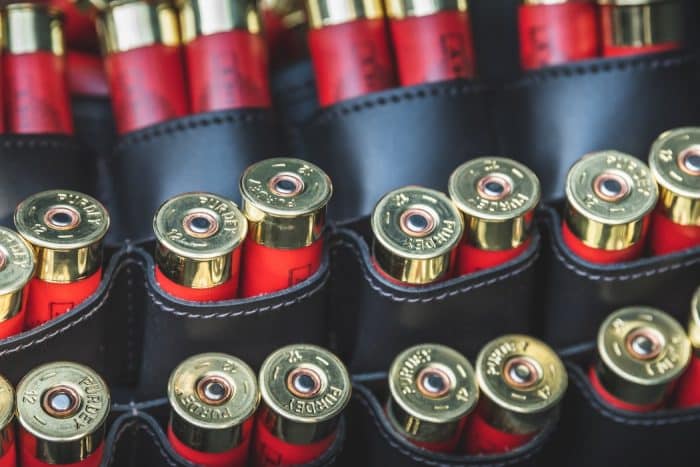

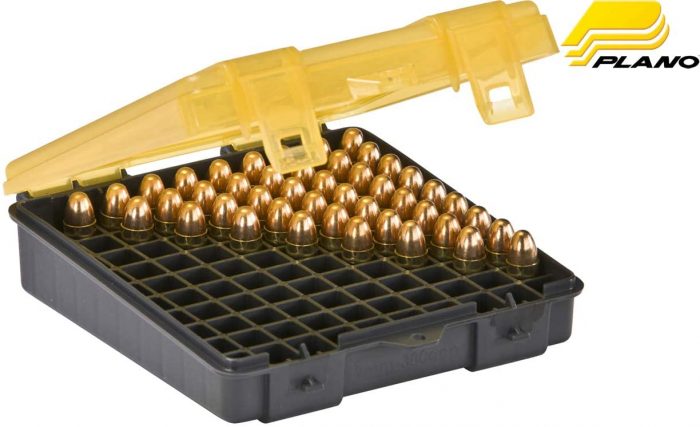


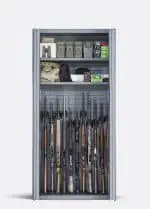
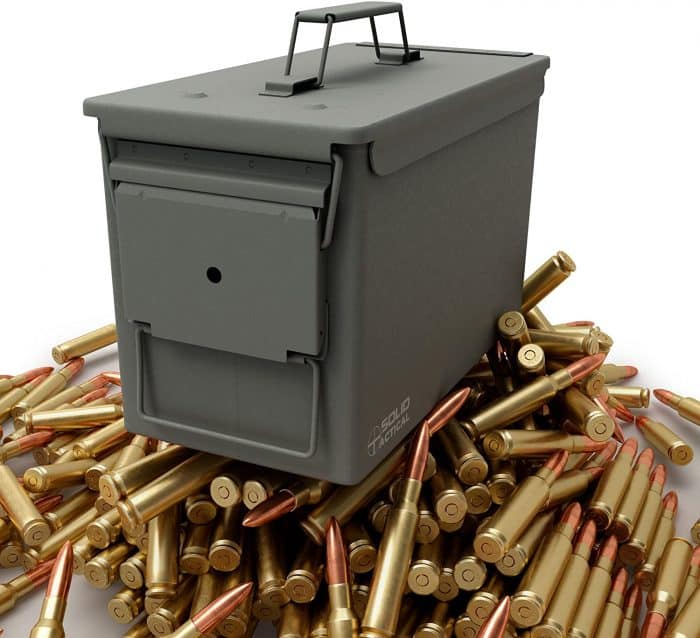
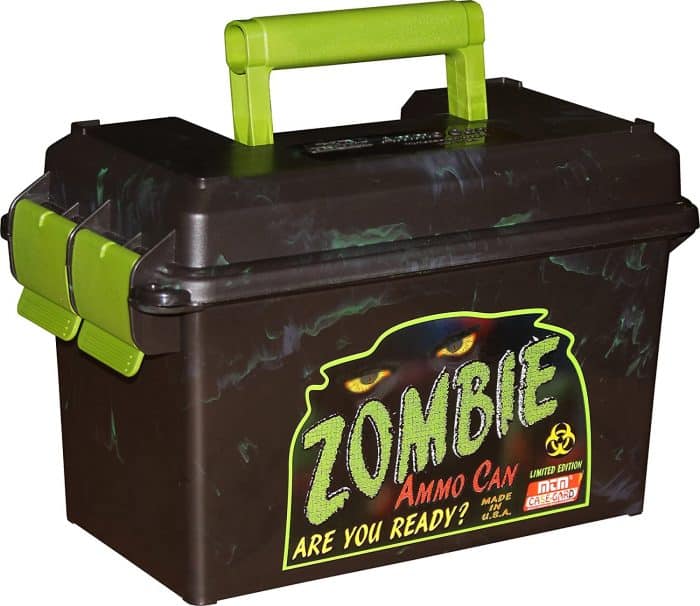
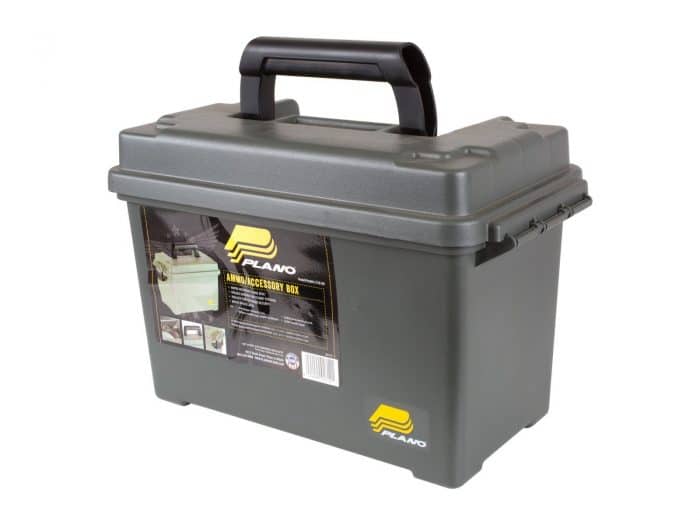
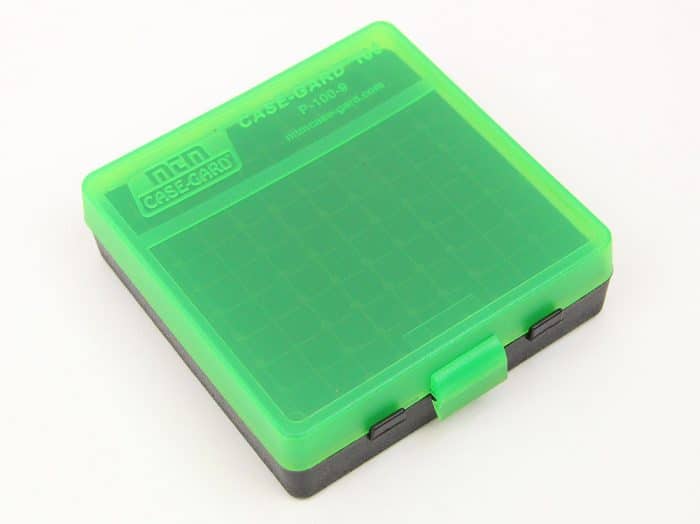
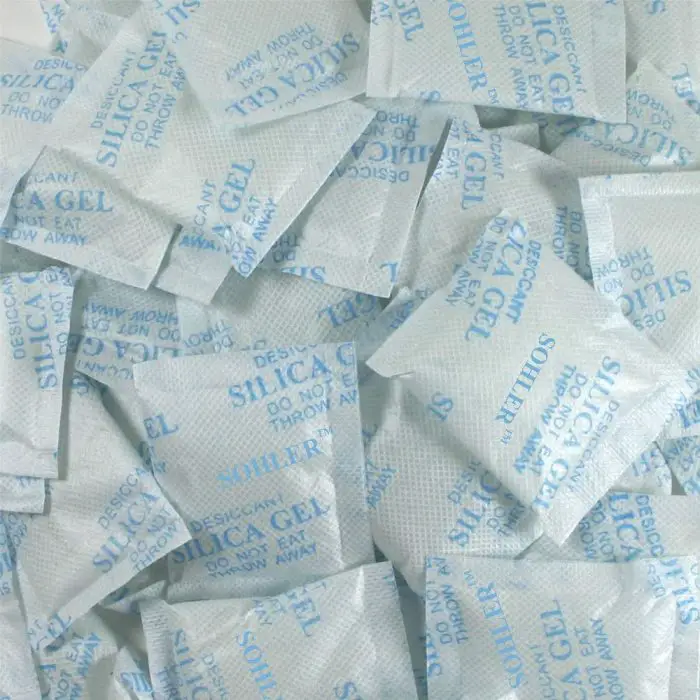
Good stuff ~ especially in places like here (Australia) where getting such items is extrememly difficult (Unless one is a memeber of the Nazi party or the police state generally. I recently noticed that some of the lead buckshot stored for about 10 years had corroded. Wouldn’t have thought it possible that lead could corrode (perhaps an antimony/alloy mix of some kind?) Replaced the loads with suitably-sized fishing sinkers. They seem to work OK, but wouldn’t want to rely on them except at very close range. …. which is what shotguns are designed anyway. Any suggestions?
Lots of good, and commonly known information here, so thank you to the author for passing out info on keeping your ammo clean, cool, and dry. Unfortunately there is also some information that, although it also exists in multiple places on the internet, is completely false and without any basis in fact.
Specifically, UV light will not affect your ammunition. It does not have a damaging affect on metals. It might affect the container it is in, it might affect the paint on some of your gear or firearms, it might affect the coatings on the exterior of the ammunition, but it will not cause corrosion and it will not keep it from going BANG!
My cousin has been thinking about getting some ammo for his guns, so that he can protect his family. He would really like to get some from a professional, so that it will fit better. It was interesting to learn about how they cannot damage anything without the explosion of a gun hammer, and loose ammo can be stored separately.
My cousin has been thinking about getting some ammo for his guns, so that he can protect his family. He would really like to get some from a professional, so that it will fit better. It was interesting to learn about how they cannot damage anything without the explosion of a gun hammer, and loose ammo can be stored separately.
Lots of good, and commonly known information here, so thank you to the author for passing out info on keeping your ammo clean, cool, and dry. Unfortunately there is also some information that, although it also exists in multiple places on the internet, is completely false and without any basis in fact.